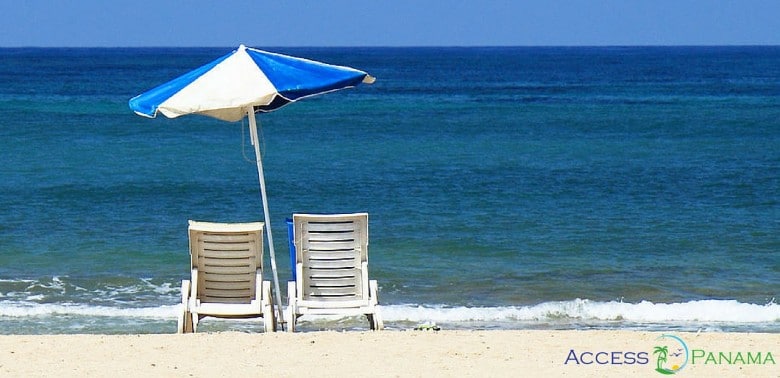Touring The Pacific Coast Beaches Near Panama City
5 Interesting Facts About Panama’s City Beaches
Seeing as everyone around here is gearing up for our inaugural Access Panama Property Tour at the end of the January, we, understandably, have the so-called City Beaches on our minds. Thankfully, my colleague Dusty Tubbs took an extended tour of the area last month and wrote a lengthy feature about the Pacific Coast beaches west of Panama City for the December issue of Panama Letter.
Before I share some of what Dusty gleaned on his fact-finding mission, I want to share a little bit about what Panamanians mean when they say they are going to the “beach” for the weekend.
When people in the States and Canada say they are going to the beach for a weekend or longer, they usually mean just that—they are going to a home or condo someplace where there will be sand and surf right outside the door. They will spend the bulk of their time there lolling under an umbrella sipping cold drinks and watching the water lap at the shoreline or taking long walks or swimming or fishing or whatever. Beachy things.
For many Panamanians (especially those with weekend homes in the City Beaches), going to the “beach” more often refers to a state of mind rather than a physical location. It’s not inconceivable that when someone from the capital goes to the beach for the weekend that they will never set foot in the sand or even see the water. Their home may be miles from the ocean, but they still call it a “beach house.” That beach house is merely an escape hatch that happens to be somewhere near the water. It’s a place where they can get away from the claustrophobia and chaos of the city, where they can lay in a hammock on the veranda or barbeque with friends and family or simply sleep all day. Sand and surf are optional.

Coronado’s black- and white-sand beach
It’s something to keep in mind if you are ever invited to someone’s beach place for the weekend. Don’t automatically assume that surfboards and sunscreen are part of the weekend’s accoutrements. You may not get wet at all, in fact. Best to ask what’s in store before heading out.
With that out of the way, here are some of what I consider the most interesting takeaways from Dusty’s report on the City Beaches in the December issue of Panama Letter.
- Many of the expats who have settled in the City Beaches in the past decade or so have congregated in the Coronado area. In fact, Dusty says, the area is something of a Little America. There are U.S.-style strip malls, restaurants are often gringo-run, the stores are big, shiny, and new, and English can be heard as often as Spanish when walking the aisles. Nearby Gorgona is still primarily Panamanian.
- By law, all beaches in Panama are open to the public. However, private property owners are not required to provide public access to a beach unless the beach is longer than 1.5 kilometers. So a beach becomes “private” if there is no way for the public to reach it.

A nice, long walk along the beach
- The roads inside of the gated Coronado community are not in great condition. There are no HOA fees so there is no money collected to repair or repave the roads. Trash collection is also an individual responsibility which contributes to garbage problems within the gated area (and even outside of it).
- Very few people know of the last official beach at the westernmost end of the City Beaches: Playa Juan Hombrón, which Dusty describes as a pristine, white-sand beach with crystal clear water just past the J.W. Marriott resort. The 10-kilometer dirt road to reach it can be difficult to drive during the rainy season—it’s not well maintained and is full of potholes and deep ruts—and can take as long as half an hour on a good day. Be sure to get out before sunset, however, when the mosquitos that breed in a nearby rice farm take over the area.
- The Río Hato Army Air Base, dating back to before World War II, now serves as a commercial airport but has yet to welcome any scheduled U.S. commercial flights even though it was officially opened by former President Ricardo Martinelli in November of 2013. The reason? Apparently the airport as it is currently configured does not meet U.S. transportation safety standards so commercial carriers will not go anywhere near it. Word is that the fuel tanks are too close to the passenger terminal. Until that changes, only charter carriers will use the airport.
There’s plenty more of interest in Dusty’s full report, including pictures of all 27 of the named beaches along the Gold Coast and a map of exactly where each sits, detailed cost-of-living data for the area, and a sampling of some of the properties for sale or rent both on and off the beaches. You can subscribe to Panama Letter and receive your copy of Dusty’s detailed report here.

A day spent golfing at the Coronado Golf and Beach Resort
If Dusty’s details have piqued your interest about the City Beaches, why not come down and see them for yourself? As I mentioned, we are all gearing up for our first Access Panama Property Tour and the City Beaches is front and center on the itinerary. We will take in Coronado, Gorgona, and a handful of other developments in the area and give you a firsthand look at what many people are calling one of the most exciting current real estate opportunities in the Americas. Join us on Jan. 29–Feb. 1. But don’t delay—we’re getting close to capacity already. More information is here.
Peg Fairbairn
Panama Insider


